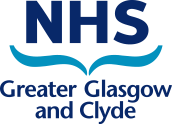10.3. Drugs for the relief of soft-tissue inflammation and topical pain relief
10.3.1. Enzymes

Restrictions:
The treatment of Dupuytren’s contracture in adult patients with a palpable cord is restricted to specialists in accordance with local protocol. The use in the treatment of Peyronie's disease is not recommended by SMC and is non-Formulary.
10.3.2. Rubefacients, topical NSAIDs, capsaicin, and poultices

Restrictions:
Restricted to use in accordance with the prescribing notes below.
Prescribing Notes:
Prior to trialling capsaicin patches, patients should have been trialled on alternative treatment options (see NHSGGC Neuropathic Pain Guideline for further details). Prior to further repeat application of capsaicin patches, patients must obtain significant pain relief and improvement in other domains of the Treatment Outcomes Form.
Formulary indications:
- Post herpetic neuralgia: restricted to specialist use in accordance with local prescribing guidance.
- Peripheral neuropathic pain in non-diabetic adults: restricted to specialist use in patients who have not achieved adequate pain relief from, or have not tolerated, conventional first and second line treatments. It can be used either alone or in combination with other medicinal products.
Use for the treatment of peripheral neuropathic pain in diabetic adults is not recommended for use in Scotland by the SMC and is non-formulary.
Prescribing Notes:
Only for short-term use (up to 7 days) due to the risk of developing contact dermatitis and photosensitivity reactions.
Patients using preparations containing ketoprofen should be advised not to expose area treated to sunbeds or sunlight (even on a bright but cloudy day) during, and for two weeks after stopping treatment; treated areas should be protected with clothing.
Prescribing Notes:
Rubefacients act by counter-irritation, so pain is relieved by producing other irritation to distract away from the pain.


